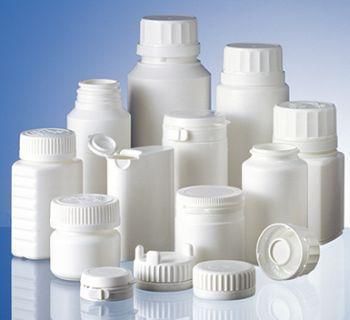
How Plastic Is Positively Impacting The World?
How Plastic Is Positively Impacting The World?

We have often heard of the disadvantages of using plastic which make us quickly forget the benefits which it has brought to the world. This blog discusses why plastic has made plastic popular and why plastic has many applications.
One of those reasons is that plastic safeguards human lives. Have you ever thought about why medical gear makers use plastic to make most medical gear? This is because plastic provides a more sterile atmosphere by providing disposable products and eliminates the requirement to reuse and sterilize tools. Plastic also provides greater comfort than its alternate metallic options and is hypo-allergenic, not likely to cause allergies.
Applications Of Plastic In The Medical Sector
Plastics have played a crucial role in revolutionizing the medical industry. With the improvements in the healthcare sector, plastic has become one of the few valuable substances that have adapted to the industry’s dynamic nature. Medical equipment makers have used plastic to manufacture new heart valves, blood bags, one use plastic syringes, and other medical instruments.
Prosthetics is another healthcare industry aspect that has witnessed significant progress over the years because of the effect of plastics. With the help of plastic prosthetics, doctors can provide healthcare solutions with improved functionality and features. One of the ways by which plastic has made healthcare cost-effective, safer, and more manageable is sterility. Medical gear makers have used plastics to manufacture medical devices and instruments like inflatable splits, catheters, insulin pens, syringes, and surgical gloves. Such commodities are employed for one-time utilization. They help stop the spread of harmful illnesses by eradicating the requirement to sterilize and re-employ a product.
Plastic is also being utilized to produce unique antibacterial touch surfaces that could repel microbes and other germs, thus cutting down the spread of harmful illnesses. Antimicrobial plastic has very high efficiency in killing microbes and can kill germs even when surfaces are not cleaned regularly.
Benefits Of Using Plastic
1. Plastic Cuts Down Emissions Of Gas And Saves Fuel
The plastic’s lightweight nature helps cars become more fuel-efficient, suggesting that we scorch less of our valuable limited resources. It also provides lightweight packing options to transport goods, resulting in less fuel utilization. People can convert plastic wastes into fuel, cutting down the number of fossil fuels that should be extracted from the ground. In this manner, plastic helps to keep the prices of fuel low. For converting plastic wastes into fuel, people need to follow the pyrolysis procedure in which anaerobic heating is done at three hundred and fifty to six hundred degrees Celsius. By providing thermal power to meet the activation power needed to crack polymer, the conversion of plastic waste is done into combustible liquid oil and gas.
2. Plastic Is Long Lasting And Sustainable
As plastic is a highly long-lasting and durable material, it is often utilized in making buildings, infrastructure, bridges, houses, and more. Plastic is lightweight yet robust. It resists corrosion and rot. Plastic has strong weatherability because of its capability to attain tight seals. This also helps create more effective housing and reduces wasted power for cooling or heating. Being a durable substance reduces the need to throw parts because of tear and wear, reducing garbage dumped in our landfills and lessening the requirement for manufacturing replacement parts.
3. Plastic Enhances Safety
In the automotive industry, plastic has contributed to a range of innovations in security- from dashboards, airbags, and seat belts to bumpers. These innovations have helped save many lives every year. Plastic has also played a significant role in improving sports safety. Think about every piece of equipment which sportspeople wear to safeguard themselves: cleats, pads, mouth guards, visors, faceguards, uniforms, and helmets. What does all this equipment have in common? It is composed of plastic. The evolution of modern sports has taken place with the evolution of sports- sportsmen made greater efforts, making them more prone to injuries. Leather equipment eventually transitioned into plastic for more durability and more protection.
4. Plastic Is Affordable And Reusable
Can people imagine how heavy and costly computers, cellular phones, and televisions would be if they were entirely composed of metal? Plastic makes these products inexpensive, housing, automobiles, and medical care, and this list continues. Manufacturers can melt plastic and reshape it over and over again. Simply recycling water bottles produced in machines purchased from PP bottle-making machine dealers could significantly reduce energy usage, pollution, and emissions.
Plastic is a precious resource that has helped carry out an unlimited number of innovations and has helped turn the world into its current position. Still, people should use it responsibly. All humans can play their role in cutting down waste dumped in landfills, encompassing decreasing scrap during manufacturing. This does not only help people save their money, but it decreases plastic waste, gas emissions, and energy usage.
